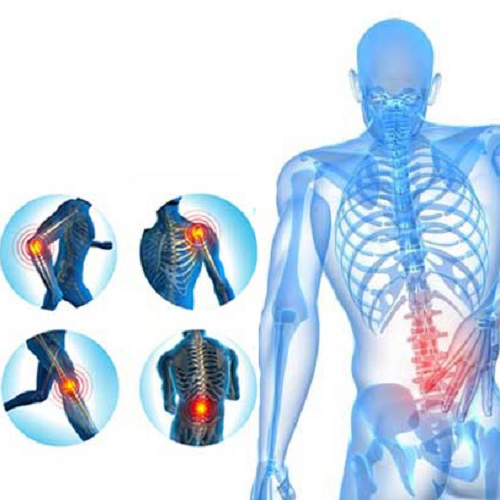
Physiotherapy or physical therapy, is a dynamic healthcare profession that plays a pivotal role in restoring and enhancing the physical function of individuals. It assists those suffering from injuries, illnesses, or conditions that affect their mobility. This therapeutic discipline relies on a combination of evidence-based techniques, exercises, and manual therapies. These techniques alleviate pain, improve strength, and promote overall well-being. In this article, we will delve into the world of physiotherapy, exploring its history, principles, techniques, and the profound impact it has on the lives of countless people around the world.
The roots of physiotherapy can be traced back to ancient civilizations. Early forms of physical therapy were practiced by the Greeks and Egyptians, who used exercises, massages, and hydrotherapy to treat various ailments. However, it wasn't until the late 19th century that physiotherapy emerged as a distinct profession with the establishment of the Chartered Society of Physiotherapy in the United Kingdom in 1894.
The field continued to evolve throughout the 20th century, with the development of new techniques and approaches, and the recognition of physiotherapy as a valuable component of modern healthcare. Today, physiotherapists are highly trained professionals who work in various settings, including hospitals, private clinics, sports teams, and rehabilitation centers, to provide personalized care to patients of all ages.
Physiotherapy is based on a set of fundamental principles that guide its practice:
Assessment and Diagnosis: The first step in physiotherapy is a comprehensive assessment to identify the patient's condition, including its underlying causes and contributing factors. This may involve physical examinations, medical history reviews, and diagnostic tests such as X-rays or MRI scans.
Individualized Treatment Plans: Physiotherapists create personalized treatment plans tailored to the specific needs and goals of each patient. These plans take into account the patient's age, condition, lifestyle, and any preexisting health issues.
Evidence-Based Practice: Physiotherapists rely on scientific research and evidence-based guidelines to inform their treatment decisions. This ensures that the interventions they provide are effective and safe.
Patient Education: Educating patients about their condition, treatment options, and self-care strategies is a crucial aspect of physiotherapy. Empowering patients with knowledge enables them to actively participate in their recovery process.
Hands-On Therapy: Physiotherapists often use manual therapy techniques, such as massage, joint mobilization, and soft tissue manipulation, to relieve pain, improve mobility, and restore function.
Exercise Prescription: Prescribing specific exercises and therapeutic activities is a cornerstone of physiotherapy. These exercises are designed to strengthen muscles, improve flexibility, and enhance overall physical function.
Physiotherapy encompasses a wide range of techniques and approaches, each suited to different conditions and patient needs. Some of the most common physiotherapy techniques include:
Therapeutic Exercises: Tailored exercise programs designed to improve strength, flexibility, and mobility. These exercises are often a central component of physiotherapy, helping patients regain their functional abilities.
Manual Therapy: Hands-on techniques that involve the physiotherapist manipulating the body's tissues to reduce pain and improve range of motion. This includes techniques like joint mobilization, soft tissue massage, and myofascial release.
Electrotherapy: The use of electrical stimulation, such as TENS (Transcutaneous Electrical Nerve Stimulation) or ultrasound, to alleviate pain, reduce inflammation, and promote tissue healing.
Hydrotherapy: Water-based exercises and treatments performed in a pool, which can provide buoyancy and resistance to aid in rehabilitation, particularly for musculoskeletal injuries.
Neuromuscular Re-education: Techniques aimed at retraining the nervous system and muscles to work together effectively, especially important in cases of neurological conditions or after surgeries.
Heat and Cold Therapy: The application of heat (thermotherapy) or cold (cryotherapy) to manage pain, reduce muscle spasms, and enhance healing.
Gait and Posture Analysis: Assessment and correction of walking and standing patterns to improve balance, stability, and overall mobility.
Physiotherapy has a profound impact on the lives of individuals across the lifespan. Here are some key areas where physiotherapy makes a difference:
Rehabilitation: Physiotherapy is instrumental in helping individuals recover from injuries, surgeries, and accidents. It plays a vital role in restoring function and mobility after events such as sports injuries, joint replacements, or strokes.
Chronic Pain Management: For those living with chronic pain conditions like arthritis or back pain, physiotherapy offers non-pharmacological solutions that reduce pain and improve daily functioning.
Sports Performance Enhancement: Athletes regularly turn to physiotherapists to enhance their performance, prevent injuries, and recover from sports-related injuries quickly and safely.
Geriatric Care: Physiotherapy is essential for maintaining the mobility and independence of older adults. It helps manage age-related conditions, such as osteoarthritis and reduces the risk of falls.
Women's Health: It can assist women with conditions such as pelvic floor dysfunction, prenatal and postpartum issues, and musculoskeletal problems related to pregnancy.
Neurological Rehabilitation: People with conditions including multiple sclerosis, Parkinson's disease, and spinal cord injuries, benefit from physiotherapy to improve their mobility.
Respiratory Care: Helping individuals with respiratory conditions like asthma or COPD improve their lung function through breathing exercises and airway clearance techniques.
Physiotherapy is a dynamic and essential healthcare profession that continues to evolve. It incorporates the latest scientific research and techniques to help individuals regain their physical function. Whether it's recovering from an injury or managing chronic pain, physiotherapy helps restore the body's natural capacity for movement. With skilled and compassionate physiotherapists leading the way, the future of this field holds great promise. Thereby, it improves the lives of countless individuals around the world.